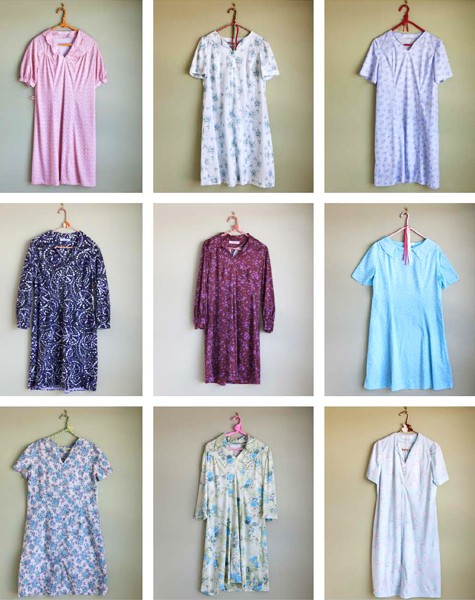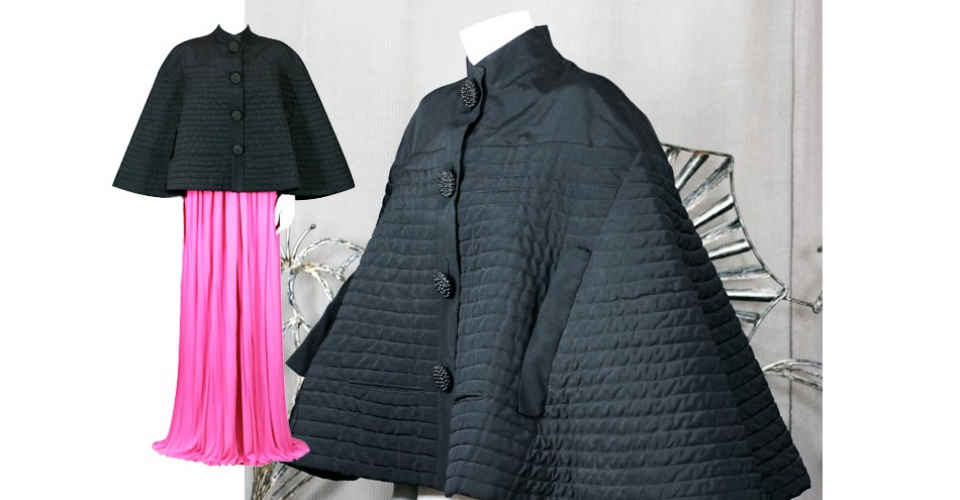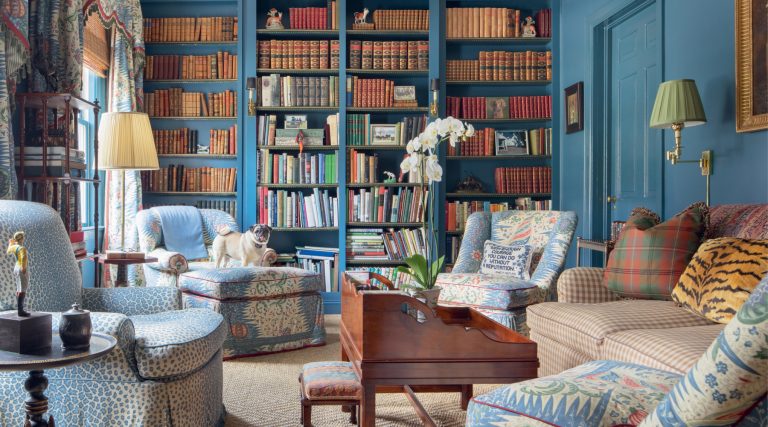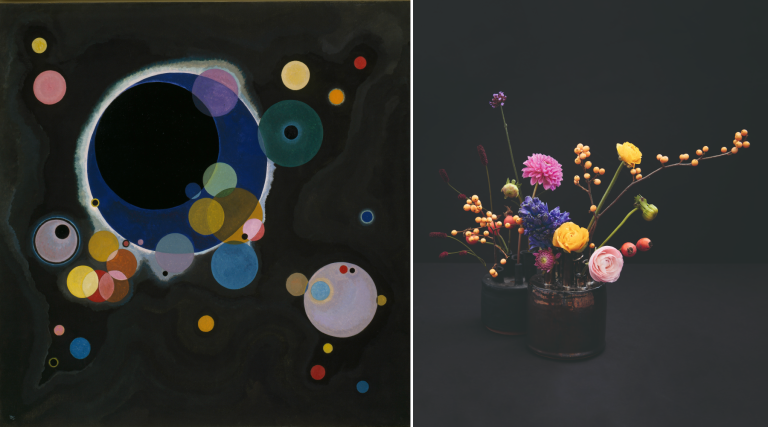
December 2014Leanne Shapton is a co-author (and the primary illustrator) of the new book Women in Clothes, which the New York Times called “part advice manual, part anthropological study, part feminist document.” Photo by Heidi Julavits. All photos courtesy of Blue Rider Press
The Chelsea studio of author and illustrator Leanne Shapton is a hop, skip and jump away from the Fashion Institute of Technology in New York’s Garment District. It’s a romantic take on an artist’s garret, with white, exposed-brick walls, an old iron daybed, a threadbare rug and very little light. It’s also a might bit chilly on a brisk fall day. The cold is understandable: In a previous life, Shapton explains, the room was a fur vault.
The setting is fitting, considering Shapton’s latest project is the book Women in Clothes (Blue Rider Press), which she edited with Sheila Heti and Heidi Julavits. The new volume takes an all-encompassing view of the subject matter, from how women feel wearing bright colors to an assessment by a “smell scientist” of the odors emanating from outerwear hanging in a restaurant coat check.
Born and bred in Canada, Shapton first made a name for herself as an art director of the New York Times Op-Ed page, among other publications. But she really came into her own with the 2006 publication of her first book, Was She Pretty?, in which her black-and-white line drawings and brief text explored women’s insecurities and jealousies. In 2009’s Important Artifacts and Personal Property from the Collection of Lenore Doolan and Harold Morris, Including Books, Street Fashion, and Jewelry, which was optioned by Brad Pitt’s Plan B Entertainment, Shapton inventively explored a doomed relationship through the prism of an auction catalog of the couple’s belongings. Swimming Studies, an illustrated memoir of her youth as a competitive swimmer and her adulthood as a recreational one, won the 2012 National Book Critics Circle Award for autobiography. Oh, and with her friend Jason Fulford she also co-founded the non-profit J&L Books to publish artists’ tomes.

One of Shapton’s illustrations diagrams items tried on and discarded as she readied for an event; corresponding notes illustrate the issues with each. For instance: “2. Vintage red Balmain A-line bouclé dress, fits well over baby bump and flattering but too Umbrellas of Cherbourg — too daytime.” Or: “5. Vintage Roger Vivier flats, found at an estate sale for $5, love, but make legs look stumpy.”
Shapton, a gamine beauty with thick, untamed, dark hair, is married to James Truman, the former editorial director of Condé Nast Publications. (They have a toddler daughter.) Truman has become a multi-hyphenate in his own right, advising Francis Ford Coppola on his wine and hotel businesses, running an organic farm with hotelier Andre Balazs and even taking a stab at producing music.
The idea for Women in Clothes was first cooked up by Julavits, a novelist and co-editor of the magazine The Believer, and Heti, a Toronto-based writer who also played Lenore in Shapton’s photos for Important Artifacts. When Heti approached her about collaborating on a book focused on dressing, Shapton says she replied, “ ‘Yes.’ No pause.”
To create the book, the three women devised and continually revised a survey that included such questions as, “How do you conform to or rebel against the dress expectations at your workplace?” and “Do you care about lingerie?”
The toughest part may have been disseminating it to as many interesting women as possible. “We are not scientists, we are not census-takers,” Shapton says. “At first it was just, ‘Let’s talk to people who we like.’ And then we realized ‘Oh, everyone we like is from the same socioeconomic background and does the same thing.’ Very early on, we thought: How do we get this to people who don’t speak English, people who don’t have computers? We needed variety and diversity.”

Along with interviews and illustrations, the book includes various mini-photo essays, including one produced by Shapton and shot by Gus Powell that features actress Zosia Mamet assuming poses from different fashion magazines, including from left People (March 1980), The Gentlewoman (Spring 2010), Vogue UK (May 1996) and i-D Magazine (Summer 2010).
In the end, the partners found more than 600 women. While a seemingly disproportionate number are Brooklynites — “Brooklyn writers know how to write,” Shapton says, by way of explanation — and there are a few usual suspects, like Lena Dunham and Tavi Gevinson, the breadth of essayists and interviewees is impressive. A Hasidic Jew writes about avoiding a social event because she dreads attending as “that girl,” the one dressed in “panty hose, long skirt, long-sleeved top and wig.” Meanwhile, a Muslim woman considers her conservative garb, including a hijab over her head and torso, liberating. “I do not have that burden on me, of making myself attractive to others all the time,” she writes.
Others include a Vietnamese immigrant whose family subsisted on sewing cheap ties from the time she was three years old; an older woman who loves a good bargain; an animal control officer who pretty much just wears jeans — and not the chic kind.
For her part, Shapton admires a handful of designers, none of them the standard bearers: British designer Margaret Howell; Bless, a cool German label; and Marjan Pejoski, the Macedonian-born designer famous — or infamous — for creating Bjork’s swan dress. “I finally found the designers who do speak to me,” she says. But she prefers men’s clothes and is now committed to buying vintage or second hand. When she sits down to speak with Introspective, she’s outfitted in gray jodhpurs, a print shirt, orange socks and clogs — the last item owing to a sprained toe.
The book is not just about fashion, per se, but about clothes. What’s the difference?
Fashion is an art. We really didn’t want to make it anti-fashion.
So we needed to talk to women about what they wear but also include people for whom it really matters and their life kind of thrives on it. For every sweatshop worker we had in there, we had to balance it out with some rarefied fashion swan, although arguably there are way more sweatshop workers than people working in fashion.
How has your approach to dressing changed since working on the book?
Since reading the interview with the woman who was in the Rana Plaza collapse [the illegally enlarged building in Bangladesh that housed garment factories and collapsed in 2013, killing more than 1,100 people] and since reading the Cambodian sweatshop workers’ accounts, and to some degree talking to the former fashion editor Miranda Purves and [journalist] Mac McLelland, I only want to buy second hand. That’s sort of the least I can do. I just really think there are enough clothes out there for me.
You’ve always had a thing for vintage anyway, right?
When I was growing up, we lived in a suburb, but we didn’t have a ton of money. I wore my brother’s clothes a lot, which I loved because I worshiped him. It was never, “Ugh, Derek’s clothes again.” It was always, “Yay, I get to wear Derek’s clothes!” My dad was a member of the Studebaker Drivers Club and loved vintage cars. I remember one of my favorite stories was Margaret Laurence’s children’s book The Olden Days Coat. I just think from a young age, the value of old stuff, how vintage things have history, have stories, have a past — that’s always been a part of my life.

The editors asked subjects to submit photos of their mothers from a time before they had children and reflect on what they saw in the images.
Why did you and your co-authors decide against including photographs of the women featured in the book?
Because of the snap judgment you make when you see a picture of a woman: I’m either going to take her advice or not. People have such strange relationships to v-neck sweaters or glasses frames — personal relationships. I really didn’t want the visual-filtering system to work. Sheila made a point, too, that when you read, “I love red shoes,” and you don’t see a picture of the woman, you become the “I.” Sometimes we would get a [prospective contribution] in, and we’d say, “Let’s Google her! We’ll look at her!” We’re all guilty of that thing. But for the book, we didn’t need it.

Many of the photos and illustrations in the book, including this one, which portrays various stains on articles of clothing, are laid out in a grid format.
You told me that finding the right tone is the starting point for your books. How would you define the tone of Women in Clothes?
I’m always after something that is elusive. For Women in Clothes, it’s the feeling you get when you compliment another woman on her clothes, which is shared. It’s insight into another person’s soul: There’s an exchange, coming back to you often with another compliment. It’s so talky, the book. We wanted the tone to be that of women enjoying the conversation they were having, about something that not a lot of women who are not in the fashion world have the facility to talk about. We wanted to have this space allowing women to be intellectual about it, critical about it, emotional about it, deep about it — and funny, because I think there’s a humor to the book, which is nice.
Women in Clothes includes several diagrams of heaps of clothes you’ve discarded when trying to decide what to wear. Is that your standard method of dressing?
It was pre-baby. Post-baby, now, it’s a lot less labored. But oh yeah, James would just come home and be like, “Shaptonia.”
If I have an idea of what I want to look like or dress like, I’ll just really try to achieve it, and again it’s tone. It’s not even always a visual thing because your body doesn’t do what you want it to or your clothes don’t do what you want them to. It’s a spirit of something that also has to function in the world and the weather, with sweating and lighting.

Shapton, center, with her co-authors Heidi Julavits, left, and Sheila Heti. Photo by Gus Powell
You’ve talked about the fish-out-of-water feeling early in your relationship with James because of his close involvement with the fashion world.
I’ve always loved clothes. I’m a very visual person. But when I met James I was confronted with a world where people pay $300 for shoes. I still can’t spend money that easily. It’s always a big deal. Seeing this up close was really interesting, but I still don’t quite get it. I still don’t understand how people can afford stuff. I understand design. My dad was an industrial designer. I get it. I get beauty. I get perfection. I get the art of it. So, in that respect, I guess I do understand how people can spend money on it and derive pleasure from it.
Meeting the people who worked in that industry, I thought: Am I going to be valued more if I wear these clothes? For a few years, I wore designer clothes uneasily. James would buy me the odd thing. But my taste was developing for them, and now I would say I actually can speak a language I didn’t speak 10 years ago, and I have tastes in that realm — very, very specific ones — that I didn’t before.
The Women in Clothes survey asked women whether they’d rather have style or taste. Which would you prefer?
I’m basically the Sweden of taste and style. I’m so neutral. I’m so open to anybody’s preference. I actually think I have both, and I nurture both. It’s this constant evolution. Taste is a language — you can have great taste in French inlay whatever, or you can have great taste in people and not in anything visual and sartorial. In some ways, maybe I value taste a little bit more over style because it’s a little less presentational. Everyone has style, and should — what’s the word? — own it.
As a trained illustrator, a consistent style is something that’s prized. That’s something that I’ve struggled with because I literally can’t draw the same thing twice!















